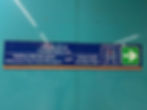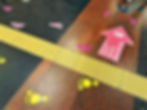A Visual Guide to Riding the Delhi Metro
- Tanmay Verma
- Jul 13
- 4 min read
Updated: Jul 14
Every day, the Delhi Metro transports 8 million people—as far as 60 kilometers and at the cheapest rates.
No wonder it's called Delhi's lifeline.
While designed and planned in the friendliest way possible, it can still trip up first-time visitors. Here is a visual guide to help you prep for your ride.
Contents:
🚇 On Board
Planning Your Route
Use Google Maps or the Delhi Momentum 2.0 app to plan the route

Pro tip: You can also use the app to buy QR tickets, rent smart lockers in over 50 stations, and get a Virtual Smart Card.
Pay attention to line colors and interchange stations

Download the full map here. ⬇️

Pro tip: In peak hours (8-10 AM, 5-7 PM), avoid interchanges through the Rajiv Chowk and Hauz Khas stations
Direction of travel is indicated by the line's final station

Finding the Metro Station
Look for the distinctive Metro logo across the city


Pro tip: If you're arriving by auto or cab, just say the station name—the driver will know!
Most stations lie along major roads with entrances on either side


Pro tip: Use the metro station as a footover bridge/subway to cross busy roads
Getting a Ticket
You can book QR tickets on the app. Getting them at the station is just as easy.


Tourist Cards can get you unlimited trips for a limited number of days
Type | Validity | Cost | Condition |
|---|---|---|---|
One-Day Tourist Card | 1 Day | ₹200 | ₹150 for travel and a ₹50 refundable security deposit |
Three-Day Tourist Card | 3 Days | ₹500 | ₹450 for travel and a ₹50 refundable security deposit |
Tourist Cards are valid for unlimited travel on all Delhi Metro lines, except the Airport Express Line.
The ₹50 security deposit is refundable upon returning the card.
If your card doesn't seem to work, contact the station Customer Care- it's usually next to the AFC gates.
Pro tip: Approach the Customer Care at smaller, less-crowded stations for quicker support
Keep your token/card handy—you’ll need it to enter and exit

Navigating the Metro Station
Concourse -> Security check -> Automated Fare Collection gates -> Platforms


Follow signs based on your line color and train direction


Plan for interchanges

Make sure to wait at the right platform

Stand behind the yellow line. Wait for passengers to exit before boarding.


Women-only coach is the first one in the train's moving direction

On Board
Delhi Metro Coaches are clean and air-conditioned



Offboarding

Pro tip: Keep your belongings close. Metro is generally safe, but it's still a public space.
Notes on Airport Metro
The Airport Express Metro (Orange Line) connects Dwarka Sector-25, IGI Terminal 3, and Aerocity to New Delhi
The Aerocity Metro station has a feeder bus that connects to IGI Terminal 1
IGI Terminal 1 Metro station lies on the Magenta Line